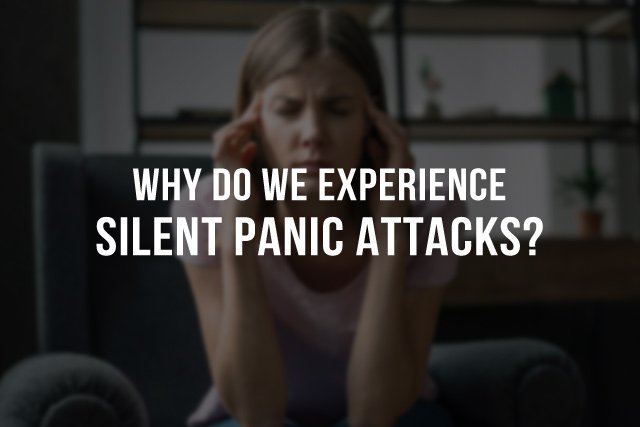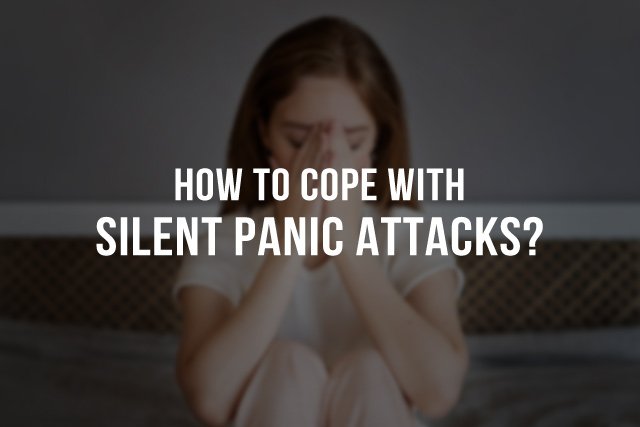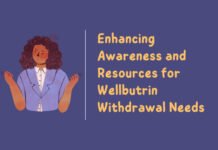
Panic attacks, known for their intense and overwhelming nature, often exhibit visible signs such as rapid heartbeats, shortness of breath, and trembling. However, a less apparent yet equally distressing variant exists – silent panic attacks. This article delves into the symptoms, causes, coping mechanisms, and additional insights for silent struggles that affect your mental health, causing silent panic attacks.
1. What Are Silent Panic Attacks?

Silent panic attacks, as the name suggests, lack the visible signs commonly associated with panic episodes. Instead, they manifest through intense emotional or psychological symptoms, making their impact equally debilitating.
2. Symptoms of Silent Panic Attacks

2.1. Overwhelming Fear
- Description: A common symptom is experiencing an irrational and paralyzing fear.
- Impact: This fear can be debilitating, making it challenging to identify its root cause.
2.2. Racing Thoughts
- Description: The mind becomes inundated with negative and catastrophic thoughts, impairing concentration.
- Impact: Racing thoughts intensify feelings of fear and dread, contributing to cognitive impairment.
2.3. Detachment From Reality
- Description: Feeling emotionally numb and disconnected from surroundings.
- Impact: Emotional disconnect can create a sense of derealization and depersonalization.
2.4. Hypervigilance:
- Description: Heightened awareness of internal sensations, intensifying anxiety.
- Impact: Increased awareness can exacerbate distress, initiating a cycle of heightened stress.
2.5. Physical Distress
- Description: Though less pronounced, physical sensations like chest tightness, stomach discomfort, and headaches may occur.
- Impact: Physical distress, though subtle, contributes to the overall discomfort during panic attacks.
2.6. Shallow Breathing
- Description: Increased awareness of breath, leading to shallow breathing.
- Impact: Shallow breathing can intensify sensations caused by panic and anxiety.
2.7. Increased Heart Rate
- Description: A subtle yet present rise in heart rate and physical discomfort.
- Impact: Though less pronounced, increased heart rate increases discomfort.
2.8. Dizziness or Tingling
- Description: Sensations of dizziness or tingling in limbs may accompany these attacks.
- Impact: These sensations contribute to the overall physiological response to panic.
2.9. Derealization or Depersonalization
- Description: Feeling detached from the body or disconnected from the world.
- Impact: These sensations are common symptoms of silent panic attacks, contributing to a sense of unreality.
2.10. Intrusive Thoughts
- Description: Uncontrollable and disturbing thoughts that may induce fear.
- Impact: Intrusive thoughts can deeply occupy the mind, causing fear and anxiety.
2.11. Nausea
- Description: A possible result of the link between anxiety disorders and gastrointestinal upset.
- Impact: Gastrointestinal symptoms, like nausea, may accompany panic attacks.
2.12. Headaches
- Description: Physical tension during attacks may lead to headaches.
- Impact: Headaches are a common symptom, peaking during silent panic attacks within minutes.
2.13. Throat Closure
- Description: Sensations of the throat closing or feeling a lump, common during panic attacks.
- Impact: Throat sensations contribute to the overall physiological response to panic.
2.14. Changes in Vision
- Description: Blurred vision, eye floaters, and light sensitivity may be experienced.
- Impact: Vision issues can be linked to panic attacks, often occurring when other symptoms manifest.
3. What Causes Silent Panic Attacks?

The causes of silent panic attacks parallel those of standard panic attacks. Factors such as imbalances in brain chemistry, genetic predisposition, traumatic experiences, and chronic stress can contribute. It may also arise due to learned behavior, where individuals internalize their symptoms to conform to societal expectations of panic attacks.
4. Why Do We Experience Silent Panic Attacks?

It can be triggered by a heightened focus on internal sensations, difficulty regulating emotions, and learned perceptions influenced by others’ experiences. Stress responses and sensitivity to emotional triggers also contribute to the experience of silent panic attacks.
5. How to Cope With Silent Panic Attacks?

Coping strategies for silent panic attacks align with those for traditional panic attacks:
5.1. Tips and Guide
5.1.1. Mindfulness and Breathing Exercises
- Practice deep breathing exercises like yoga, walking, and running to build resilience against it.
- Focus on the present moment and control breathing to manage anxiety and stay healthy.
5.1.2. Cognitive-Behavioral Therapy (CBT)
- Identify and challenge irrational thoughts with the help of a therapist.
- Engage in structured CBT sessions to address the root causes of silent panic attacks.
5.1.3. Focus on Self-Care
- Establish a consistent self-care routine to create a stable foundation for managing anxiety.
5.1.4. Progressive Muscle Relaxation (PMR)
- Learn PMR techniques online or from a therapist for effective stress reduction.
5.1.5. Medications
- Consult with a psychiatrist for prescribed medications if symptoms are severe.
5.2. Immediate Steps to Stop a Silent Panic Attack
- Find a Quiet Space
- Close Your Eyes and Focus on Your Breathing
- Count to 10 Slowly
- Repeat a Calming Mantra in Your Mind
5.3. Long-Term Solutions: More Than Just Coping
- Cognitive Behavioral Therapy (CBT)
- Green Therapy (Mindfulness and Relaxation Techniques)
- Regular Exercise
- Pharmacotherapy
- Support Groups
6. Additional Insights

6.1. Understanding the Social Stigma
It may often go unnoticed due to the societal expectation that panic attacks should have visible symptoms. This stigma can lead individuals to internalize their struggles.
6.2. Impact on Daily Life
The subtle nature of silent attacks can make them challenging to identify, potentially affecting personal health and wellness. Seeking support is essential for managing their impact.
6.3. The Role of Genetics
Individuals with a family history of panic or anxiety disorders may be genetically predisposed to silent panic attacks. Understanding this genetic link can aid in developing targeted coping strategies.
6.4. Exploring Holistic Approaches
Integrating holistic approaches such as natural remedies, acupuncture, or dietary changes may complement traditional coping strategies. Consultation with healthcare professionals is advised.
Conclusion
Silent panic attacks might not be as visible as standard panic attacks, but they are no less distressing and debilitating. Recognizing and validating these experiences is crucial for effective coping. Seek professional help if needed, as therapists can guide individuals in implementing strategies to reduce symptoms and promote calmness. Remember, recovery is a journey; with the proper support, it’s an achievable path.








